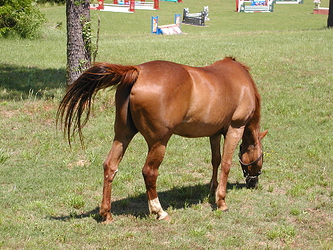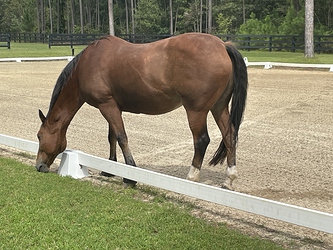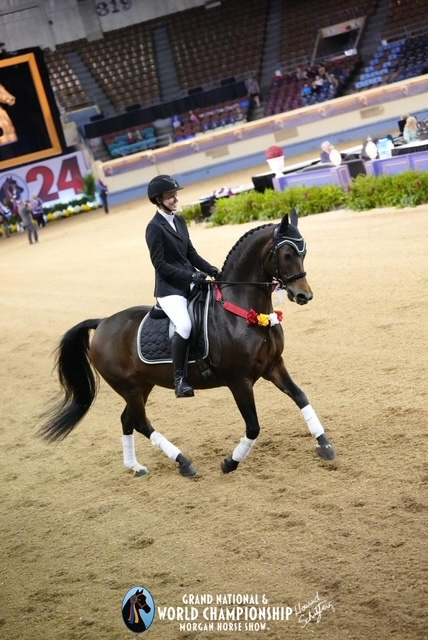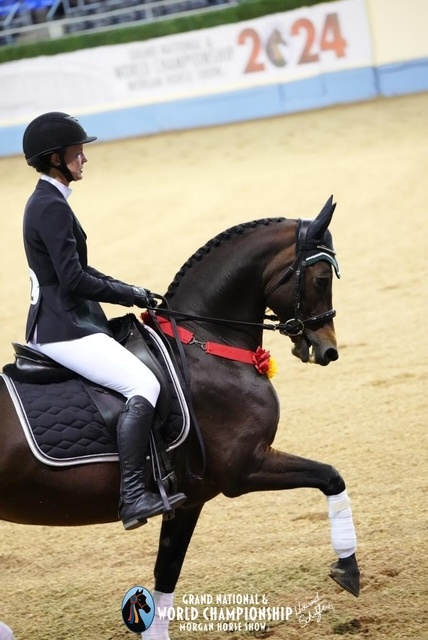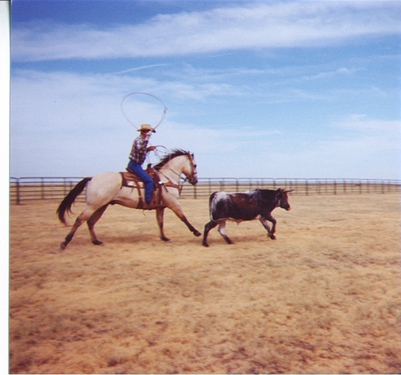I have one riding horse at home, and for the last little bit we have been mostly riding on the trails around our property, hauling to lessons, and occasionally hauling down the road to a barn with an arena for “arena time.” I would like to set up a proper arena space for us at home. Our land is already very sandy, and other than a couple of spots seems to drain well. When we first moved in we had to do some work to level our pastures because they use to be blueberry fields and had humps in them. It’s not laser leveled, but it’s pretty darn flat. I have a spot I am eyeing due to the amount of late afternoon shade it gets. I would prefer to not rip up the grass after we worked so hard all those years ago to plant it. In theory, can I just fence this area off, and start riding? Or do I need to actually “do something” to make it a suitable riding area?
Sounds like you can just ride in it. I used to ride in our pastures all the time - we had a budget ‘arena’ where we had dumped sand in an old garden area, but if I wanted to work on anything requiring more space, I set up long grids, the full dressage arena, etc. out in the pasture. There’s nothing wrong with riding on grass, especially since it sounds like you have nice soil and have already levelled it fairly well.
Unless it’s horribly uneven potholes, etc, just ride on it. Lots and lots of people ride in pastures, I have certainly ridden in a variety of pastures, both when there wasn’t an option, and on purpose because of the wide open space
The only downside, depending on the type of grass, is that you may eventually kill some of the grass if you ride there long enough, especially along the fence line. If you need to fence it off to keep other horses from coming into the “ring” while you ride, then that’s just a price to pay. But if you don’t, like horses will be in stalls, or another section of pasture that’s fenced off, then you can use cones are your “fence line” and just move them a few feet every week or 2 so you’re not riding over the same ground every time you ride along the “fence”
No reason not to do a grass arena. Just walk it regularly to ensure that the grass isn’t hiding any new hoof sized sinkholes from decaying tree roots. That’s a recurring problem for me as my land was formerly a southern pine forest that was cleared for development as hobby-sized horse farms.
I was thinking of fencing it off more so that horses didn’t mess with anything that I might want to leave out there long term, mounting block, ground poles, etc.
I would suggest if the grass is in good shape to fence with step ins and hot tape (not hot). This would make moving it to mow a ton easier. Mowing under a fence line is a PITA.
I have to say I’d rather mow the fence line than move a fence every time LOL
As rarely as I mow it wouldn’t be a big thing lol
That is what we did when I was a teenager, and it worked out OK - we didn’t use it every day, maytbe twice a week.
My horses have 24/7 access to both my sand dressage arena and my grass jumping field. Dressage arena has a low single vinyl board border, and the jumping field sits inside a fenced pasture. The only things they will bother with are any ground poles and the dressage arena letter cones. Those get nosed out of their ways as they graze. Seldom during the summer while the pasture grass is green, but more often in the winter months.
I have a grass outdoor ring. I don’t use it a lot, but it’s quite nice to ride in. I graze it at night also. It is naturally well drained, and this is a fairly arid area. I mow it every now and again, and remove any nasty weeds. My horses are barefoot, and there is little damage done to the grass due to use, and the traction is fine. My choice was either this, or dusty loose natural soil, or dump a whole lot of cash into turning it into something else. It’s not “laser levelled”, but it’s flat enough for a horse to work in there, and jump. My horses are accustomed to dealing with terrain.
we do not have a specific arena but have been able to develop horses that can win, the horse is not fluke but is worked usually in our pasture. Recently as she goes up in levels she is hauled out once a week for a dressage lesson at a real dressage instructor on her really expensive nice arena mainly to improve the rider otherwise horse is worked in her dry dusty paddock (a normal summer in Texas)
As for the horse, we received a letter from Saddle Horse Report that Lexie (GW Inspiration) had been voted by their readers as Morgan Classic Dressage horse of 2024.
what I am pointing out a successful horse can be produced without a six figure arena (but it would be nice to have)
We also have sandy loam and all we did is fence a corner of the pasture right by the barn for our roping 300’ x 120’ with 8’ return alley roping arena.
Rides wonderfully and dries very fast after rains.
We also use it to turn out and so start new horses so they get to know others over safe common fences.
Just out of curiosity…would anyone be able to advise on the size of a round lunging arena? I am considering building one on my farm, but I am new and not really sure how large I should make it
Good question, while you can adapt to any size round pen you have room for or is handy and already there, if you are building one is smart to check what others like.
Most colt starting round pens tend to be 50’ diameter.
You can do so much there with lines longing or driving, you can walk and trot, but is a bit tight to work a horse hard or canter a long strided uncoordinated colt.
More all around would be a 60’ diameter round pen, but you may have to walk more when horse is at liberty.
That is what we have, is really 59’ diameter and we have used it for most everything, even to start border collies herding on a few goats.
Bigger is easier on horse’s joints not to have a too tight circle to work in.
Most cutting trainers like larger ones, up to 150’ diameter, so they can follow cattle without being too crowded for cattle and horse in there, while still keeping them contained and at a slower pace than in a bigger area.
It would be best if you can take the kind and size of horse you will be working with to different ones and see what works best for you.
On the other hand, whatever you decide you can make it work by using it best that size permits.
20 meters in diameter, or about 66 feet, because that is the width of a dressage arena
That is so awesome!!
My horse is mostly a fox hunter (we drag hunt before anybody gets too excited), but we do go to lessons with a hunter trainer and have done some jumper shows. There has been a changing of the guard at the club, and I am thinking of doing more showing and less hunting, which is why I want an arena.
Mine is 80 feet in diameter. I like it that big. I can set a little jump in there, and they aren’t in a tight enough circle that this is a problem. Less physical wear with more room. It’s also grass footing, though there is a worn path around the perimeter of course. The ground here is just really good just the way it is, it’s an old lake bottom, so it is a lot of peat- so springy. But dry now, and we are fairly dry here with not a lot of rainfall. The grass roots hold everything together well, good traction with cushion.
we are a low/limited budget showing family, our saving grace is we have been active for nearing four decades within the Morgan breed which has produced some amazing long term relationships that are always helpful.
Some of these people have memories that just shock me, as daughter was exiting the arena heading back to stabling she was stopped by a trainer asking if Lexie was an offspring of her horse she had a child (Shamrock Foxie Joy) some nearly thirty years ago. We had not really noticed the similarities but after really looking at Lexie and photos of Foxie they could have easily been mistaken as the same horse down to the same snip on the nose (Lexie is 14h and Foxie was 14.1)
Perfect I have just the location to put one of these, thank you

